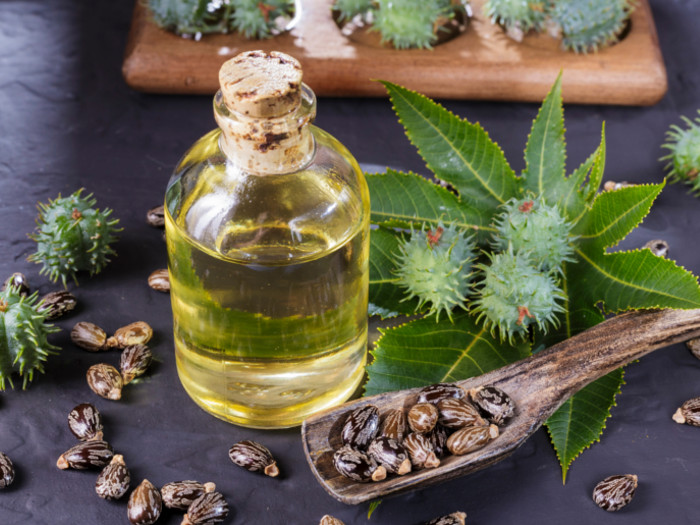Using castor oil for hair is a natural and easy way to revitalize your locks and protect your hair from damage when used properly. Castor oil is a very effective remedy for your hair health, and it is something that can be used every day. However, most regular users claim that using it 2-3 times per week is more than enough to see measurable results.
Castor Oil
Castor oil is the oil extracted from castor seeds, which come from the castor oil plant, scientifically known as Ricinus communis. [1]These seeds contain a high concentration of essential oil, ranging from 40-60% of the total volume. The oil is colorless, but it has a very clean flavor and odor and is considered a triglyceride. The majority of the benefits that castor oil can provide comes from its active ingredient, ricinoleic acid, along with various other volatile compounds and antioxidants. [2]

Castor oil is produced by cold pressing ripe seeds from the castor plant. Photo Credit: Shutterstock
What Type of Castor Oil Should You Use?
If you want to use castor oil on your hair, you want to be sure you choose the right variety.
- Castor oil blends: Some people like to make their own castor oil hair treatments with a combination of castor oil and other hair-healthy oils, such as jojoba oil or coconut oil.
- Cold-pressed castor oil: It is always best to use organic or cold-pressed castor oil, as this will have more nutrients and fewer additives or chemicals.
- Jamaican black castor oil: Many frequent users claim that Jamaican black castor oil is particularly effective, as it isn’t as thick or viscous as other varieties, which makes it easier to spread through the hair. [3]
- Hydrogenated castor oil: People also use this variety of castor oil. However, this is best avoided as hydrogenated castor oil often comes in the form of hard wax, and it will harden when exposed to water.
How to Use Castor Oil for Hair?
After you choose the right type of castor oil for your hair, you should know how to use it on the hair to be as effective as possible. You can use castor oil for hair loss, to stimulate hair growth and to improve the health of the scalp, among others. One of the most popular ways to use this oil is when mixed with other carrier oils. Remember, you only need a few drops of this oil to be effective.
Application Method:
- Step 1: Mix 3-4 drops of castor oil into 10-12 drops of coconut oil.
- Step 2: Massage this mixture into the scalp, pulling the oil through the hair from root to tip.
- Step 3: To remove castor oil from your hair, massage conditioner in with warm water.
- Step 4: Rinse out the oil and then shampoo your hair. Alternatively, you can wear a shower cap and leave the oil in overnight for faster results.
Castor Oil Benefits for Hair
There are many different benefits of using castor oil in your hair, including reducing split ends, thickening the hair and protecting against damage, among others. [4]
- Controlling hair loss by moisturizing the scalp and stimulating follicle health
- Encouraging hair growth in bare patches due to the rich nutrient mix
- Treating dandruff by reducing inflammation on the scalp
- Reducing the appearance of split ends
- Thickens hair and boosts volume
- Naturally conditions the hair for better texture
- Protecting hair from damage (e.g., sunlight, hair products, environmental toxins)
- Increasing the shine of your hair
- Darkening your hair as you age
Side Effects
There are countless benefits of using castor oil for hair, but there are also some side effects to consider, such as potential allergic reactions. If you have sensitive skin, the use of castor oil may result in itching, redness and general discomfort. Before using this oil for the first time, it is recommended that you apply a patch of the oil to a small part of your skin. Wait 24 hours and monitor the area closely. If you see any redness or experience inflammation, avoid using the oil on your scalp and hair. [5]
